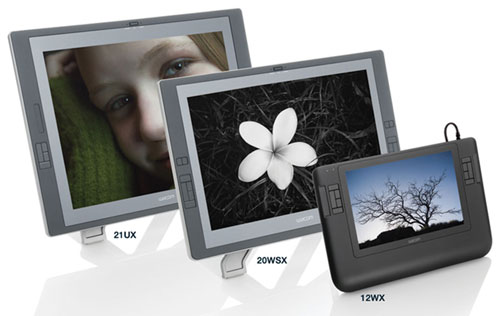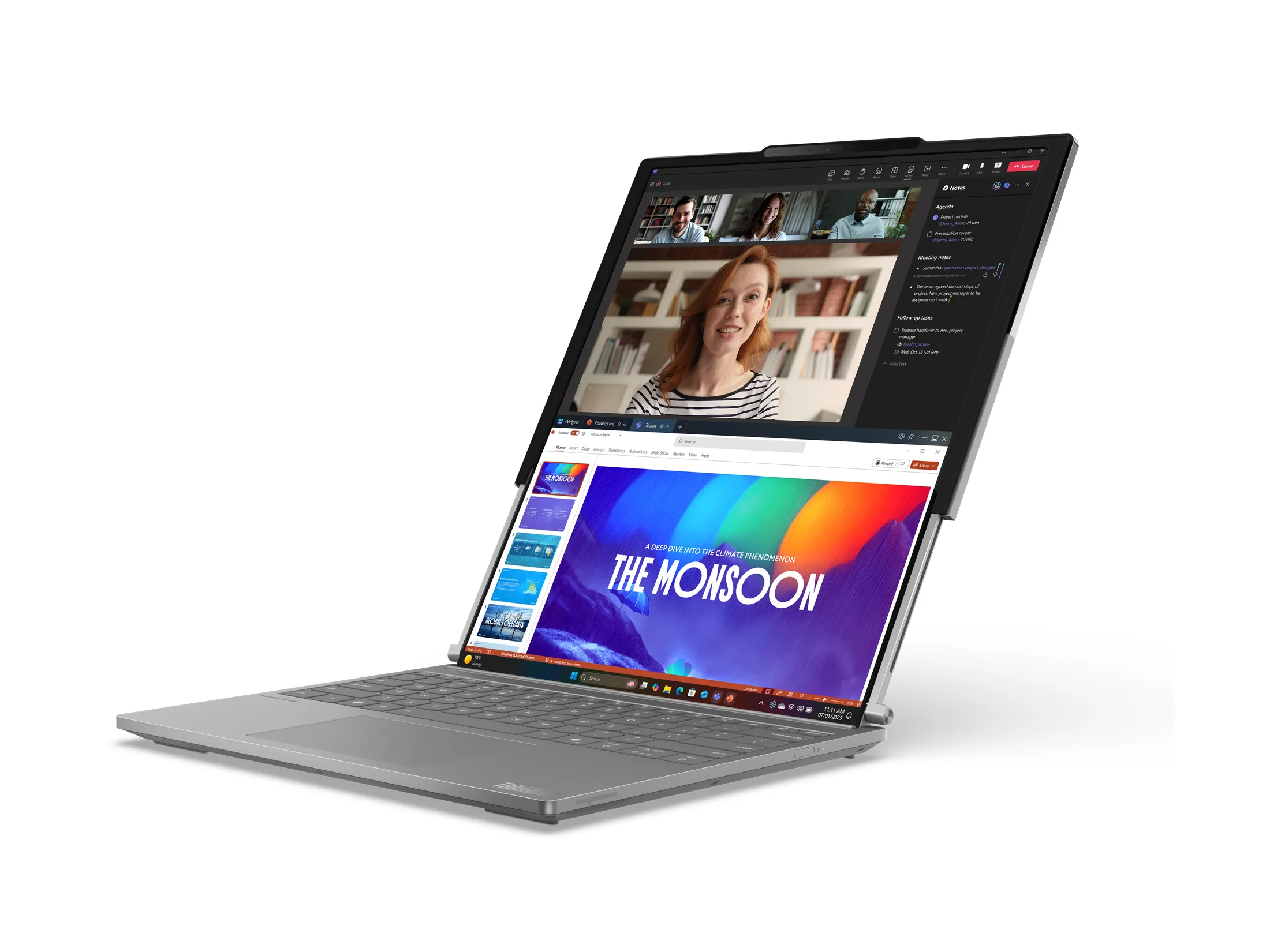
By Evan Ackerman
When it comes to digital imaging (Photoshop, Illustrator, etc.), there are some things that you just can’t do efficiently without a graphics tablet. In my somewhat limited experience, most things are way easier to do with a pen than with a mouse. The only problem is the discontinuity between what you’re drawing on the tablet, and what’s happening on the screen, especially if the size of your tablet is different than your screen size. Wacom’s Cintiq (don’t ask me how to pronounce it) series of graphics tablets incorporate high resolution displays into the tablet surface, to create a slick digital canvas.
The tablets come in three sizes and resolutions: 21″ diagonal (1600×1200), 20″ diagonal (1680×1050), and 12″ diagonal (1280×800). The largest tablet weighs a whopping 19 pounds, so it’s not really something you’d want sitting on your lap for any appreciable length of time. The pens are powered by induction from the surface of the tablet, and offer over 1,000 levels of pressure sensitivity. You’ve also got a bunch of touch sensitive controls and presets around the edges of the tablet, to adjust zoom, brush sizes, or whatever you find convenient.
So, what’s not to like (besides the weight?). Well, it would have been nice if the largest model was HD resolution. Even at UXGA, the 21″ tablet still costs $2500 (!), and the display itself is mediocre at best, with a brightness of 220 cd/m2 and a contrast ratio of 550:1. Also, it’s not multitouch, which is all the rage now. So unless you’re a hardcore graphics editor (in which case you’ll probably be willing to sell your soul for one of these babies), I’d recommend saving a bit of money and just getting a decent tablet PC.
[ Wacom Cintiq ] VIA [ DVICE ]










